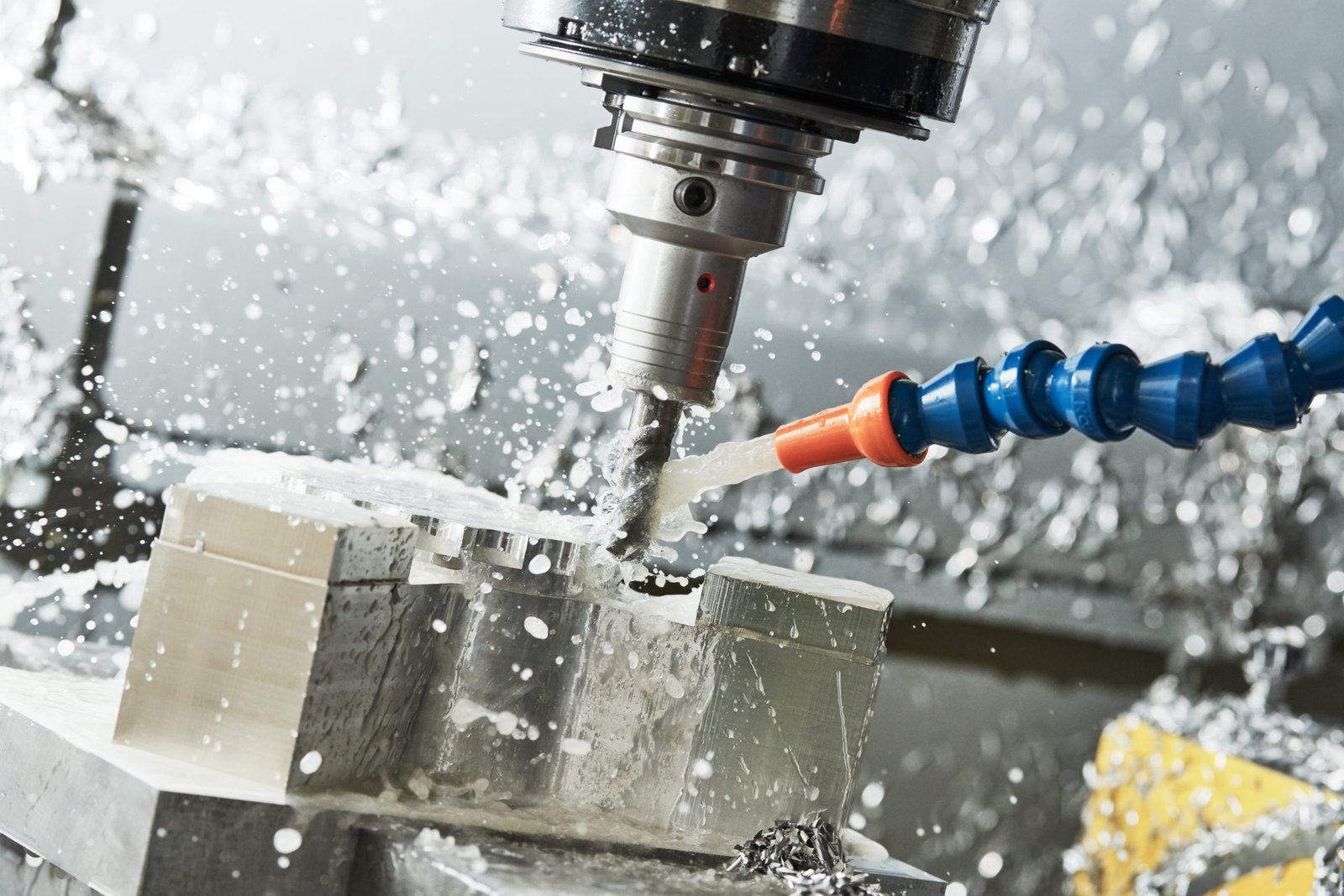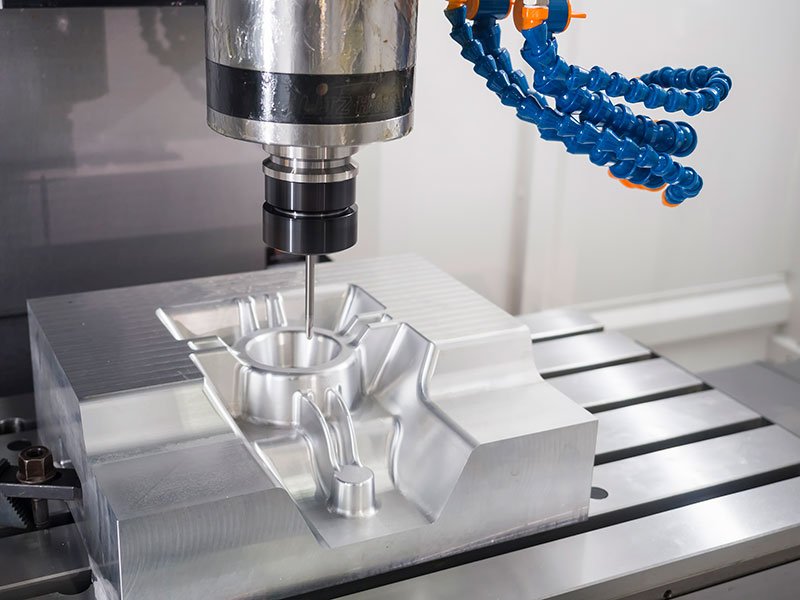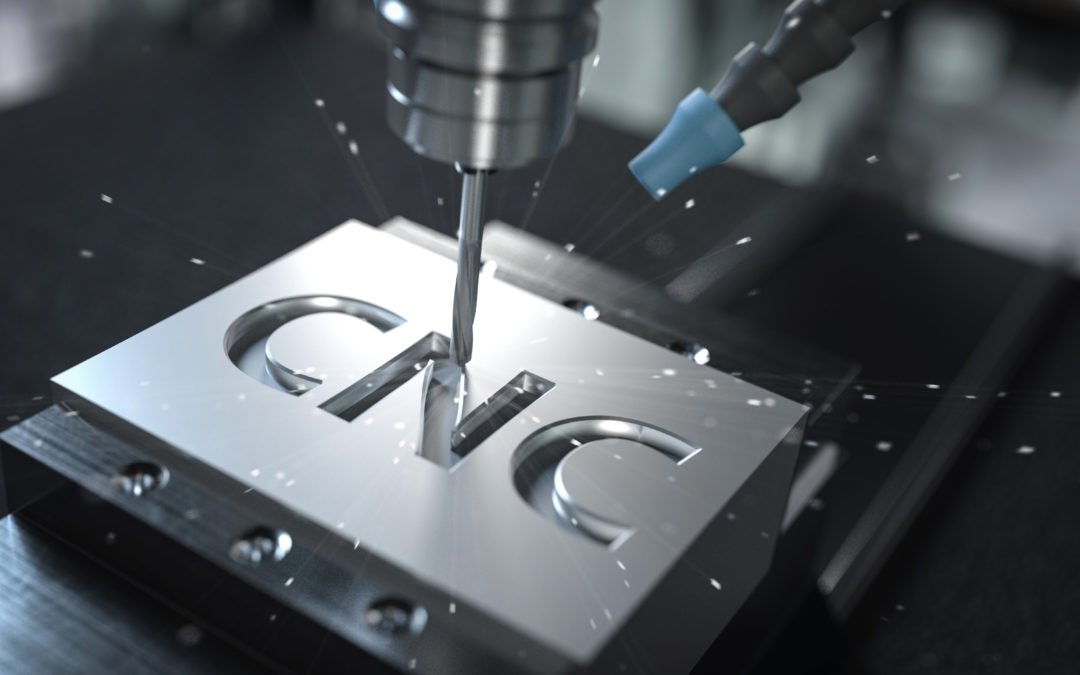CNC milling, short for Computer Numerical Control milling, stands as a cornerstone in modern manufacturing, driving precision and efficiency across industries.
At its essence, CNC milling is the art of transforming raw materials into intricate components with unparalleled accuracy, all guided by computerized instructions.
But how does this complex dance between man and machine unfold? Let’s delve into the inner workings of CNC milling to unravel its secrets and unveil the marvels it brings to the realm of production.
What is CNC Milling?
CNC milling is a machining process utilizing rotary cutters to extract material by guiding a cutter into a workpiece. This method involves adjusting the cutter’s direction on one or multiple axes, its speed, and the applied pressure. It encompasses various operations and machinery, from crafting small parts to executing large-scale gang milling tasks, offering precision in custom part manufacturing.
A broad array of machine tools can execute milling. Initially, milling machines, often referred to as mills, were the primary tools. However, with the introduction of computer numerical control (CNC) in the 1960s, these machines progressed into machining centers.
These centers feature automatic tool changers, tool magazines, CNC capabilities, coolant systems, and enclosures, enhancing efficiency and accuracy. Typically, milling centers are categorized as vertical machining centers (VMCs) or horizontal machining centers (HMCs).
The integration of milling into turning processes, and vice versa, initiated with live tooling for lathes and occasional mill usage for turning tasks. This evolution gave rise to multitasking machines (MTMs), designed specifically to accommodate both milling and turning operations within a single workspace.

How does CNC Milling work?
CNC milling is a sophisticated process that combines precise engineering with advanced technology to produce intricate parts with high accuracy. At its core, milling involves the use of a rotary cutting tool, known as a milling cutter, to remove material from the surface of a workpiece.
Unlike drilling, where the tool moves along its rotation axis, milling typically involves perpendicular movement to the axis of the cutter, allowing cutting to occur on the circumference of the tool.
As the milling cutter engages with the workpiece, its cutting edges repeatedly penetrate the material, shaving off chips with each pass. This cutting action is a form of shear deformation, pushing material off the workpiece in small clumps to form chips.
The process relies on performing many small cuts, facilitated by using a cutter with multiple teeth, high-speed rotation, or slow material advancement, or a combination of these factors.
The CNC milling process takes this traditional milling concept and elevates it through automation and precision. It begins with the creation of a 3D CAD file representing the final part. This design is then translated into a machine-readable format using CAM software, typically in G-code. The CNC machine interprets these instructions, guiding the milling cutter to replicate the CAD design with remarkable accuracy.
Operating on subtractive machining principles, CNC milling machines can produce complex parts in both high and low volumes. Material is removed from a blank workpiece using a rotating cylindrical milling cutter. Depending on the machine configuration, milling can occur at various angles and along different axes, allowing for intricate designs and precise outcomes.
Milling machines typically operate using 3, 4, or 5 axes. For simpler parts, a 3-axis milling machine suffices, offering ease of programming and operation while maintaining excellent accuracy at a relatively low cost.
The cutting tools in a 3-axis machine are attached to a spindle operating along three linear axes, allowing for precise cutting even through sturdy materials at high speeds.
However, 3-axis CNC mills often cannot machine undercuts, requiring more complex milling machines for such tasks. The 4-axis machine, for example, offers additional rotation along the X-axis, akin to a lathe.
At the pinnacle of milling technology are 5-axis machines, boasting rotation along both the X and Y axes. These machines are indispensable for highly intricate designs, including those found in medical devices, aerospace structures, and other advanced applications.

Types of CNC Milling
Vertical Milling
In vertical milling, a 3-axis milling table serves as the work surface positioned below the spindle arm. Depending on the type of vertical mill used, the spindle may either remain stationary in a turret vertical mill, with the table moving along both the X and Y axes, or the table moves solely along the X-axis in a bed vertical mill, while the spindle travels along the arm’s length in the Y-axis direction.
Horizontal Milling
Horizontal milling involves a spindle operating horizontally, with other components similar to vertical milling machines. Typically, horizontal mills are preferred for heavier or lengthier projects and those requiring substantial material removal, as swarf falls away from the part and cutter.
Face Milling
In face milling, the cutting tool’s rotation axis is perpendicular to the workpiece surface. Face milling cutters, featuring teeth on both the periphery and face, are utilized for finishing applications. This method is effective for creating flat surfaces and achieving precise finishes, compatible with both vertical and horizontal milling machines.
Plain Milling
Plain milling employs a cutting tool rotation axis parallel to the workpiece surface. The periphery of plain milling cutters performs the cutting operation, with both narrow and wide cutters used for deeper cuts and larger surface areas. Varying cutting speeds and feed rates facilitate detailed machining, enhancing the final part’s intricacy.
Angular Milling
Angular milling involves cutting tools’ rotation axis set at an angle relative to the workpiece surface. Single-angled milling cutters enable the creation of angular features such as grooves, serrations, or chamfers.
Form Milling
Form milling is ideal for milling operations requiring irregular surfaces, contours, outlines, or parts with curved or flat surfaces. Specialized milling cutters like concave cutters or corner rounding cutters cater to specific applications, facilitating the machining of complex designs such as hemispherical or semi-circular shapes.

Advantages of CNC Milling Process
Enhanced Quality and Precision
CNC machining boasts unparalleled levels of accuracy and precision, owing to its computer-controlled operation. 3D designs, crafted via Computer-Aided Design (CAD), are translated into machining programs, initiating the manufacturing process through a machine interface.
With minimal room for error, CNC milling ensures meticulous management of even the most intricate geometries, guaranteeing superior quality output.
Increased Production Efficiency
The automated nature of CNC milling enables high-volume production, making it an ideal choice for mass manufacturing. CNC machines operate seamlessly, consistently delivering parts with uniform quality and finish. Particularly with 3-axis machines, programming and operation are straightforward, achieving remarkable accuracy at a cost-effective rate.
>>> Read more: Advantages of CNC Machining in Vietnam
Reduced Labor Intensity
Employing CNC milling machines significantly reduces manual labor requirements in the production process. With the ability to operate at high speeds, CNC tools spin at thousands of revolutions per minute, optimizing production output while minimizing time and labor expenses. Unlike manual processes, CNC machining eliminates the need for extensive human intervention, streamlining the manufacturing workflow.
Uniformity in Production
CNC machining tools are engineered to precisely sculpt workpieces with consistent accuracy. Guided by computer programs, each part is crafted with identical precision, ensuring uniformity across the entire production batch. This uniformity extends to high-volume manufacturing, where manufacturers can rely on CNC milling to consistently deliver parts of standardized quality and finish.
Conclusion
CNC milling is a highly precise and efficient manufacturing process that offers numerous benefits, including superior quality, increased production output, reduced labor intensity, and uniformity in production. By leveraging advanced computer-controlled technology, CNC milling ensures consistent and accurate results, making it a preferred choice for a wide range of industries.
For businesses in Vietnam seeking reliable CNC machining services, MaTec Vietnam stands as a trusted partner. With their state-of-the-art facilities, experienced team, and commitment to excellence, MaTec Vietnam offers comprehensive CNC milling solutions tailored to meet the diverse needs of clients across various sectors.
Whether it’s prototyping, production runs, or specialized machining projects, MaTec Vietnam delivers precision, reliability, and exceptional customer service, making them a premier choice for CNC milling services in the region.
